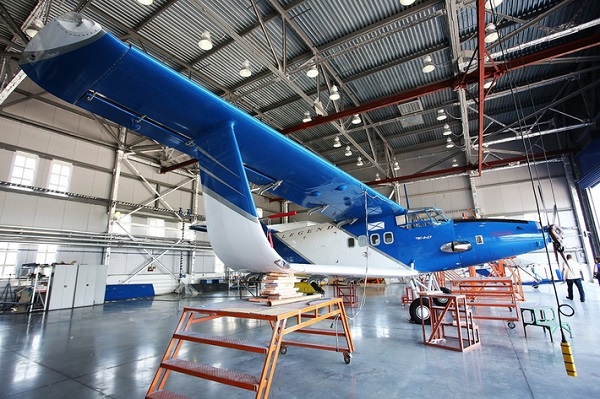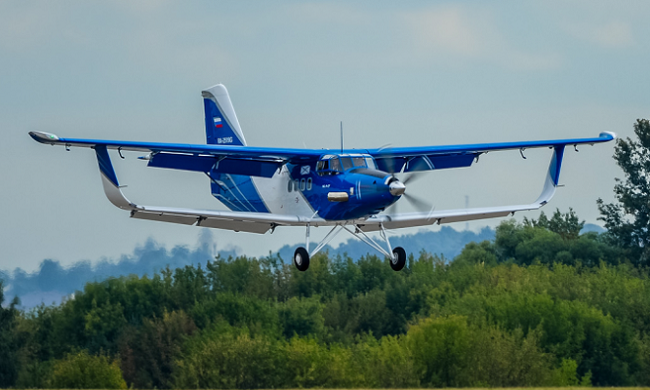New all-composite aircraft TVS-2DTS made its first flight
One of the brightest copies of civil aviation presented at the 13th International Air Show MAKS-2017, held in Zhukovsky near Moscow from July 18 to July 23, 2017, was the new TVS-2DTS aircraft.
Official tests of the composite aircraft were performed on July 10, 2017 at the Yeltsovka site near Novosibirsk. The test flight lasted about 20 minutes and was considered successful. Specialists of the Siberian Research Institute of Aviation. S.A. Chaplygin, who gave life to a new aircraft, positioned it as a renewed replacement for the good old AN-2, known to the majority by the resounding nickname "corncob".

Production of the AN-2 in the Soviet Union was launched 2 years after the end of the Second World War and lasted until 1971. In addition to the USSR, the release of aircraft was adjusted in Poland, China and some other countries. The devices of those times still perform significant tasks for many industries.Due to the availability of service and the ability to land on any, even the most unprepared sites, the AN-2 has no equal in agriculture and a worthy alternative in many ways is not currently represented on the market.
In fact, TVS-2DTS is similar to the AN-2 only outside. In all other respects, Siberian specialists managed to create an absolutely unique and one-of-a-kind model, which in the very near future will occupy a worthy niche in the civil aviation market.
The basis of the aircraft body is carbon fiber - This is his main feature. Material properties gave the device unique characteristics.
For reference. CFRP (carbon) is a multi-layer fabric consisting of carbon fibers placed in a sheath of polymer thermoactive resins. Carbon is lighter than steel and aluminum, has the ability to retain its shape up to temperatures of + 2000 ° C, is resistant to corrosion, has a high degree of strength and elasticity. In addition, objects made of carbon fiber look good.
TVS-2DTS is equipped with the engine start system of the company "TEEMP", it is based on hybrid drive. The system allows you to provide the power needed to run through supercapacitors, and retain power to the on-board network through batteries. Thus, the mass of the structure is reduced by more than 50 kg, and the battery life is increased 2.5 times. Moreover, only supercapacitors are capable of operating at temperatures below -50 ° C.

It should be noted, and the design features of the apparatus, the so-called "closed wing" made it easily recognizable. The essence of the design is as follows: the tips of the lower wing smoothly bend upward and connect the element with both consoles of the upper wing. Thus, there is no need to use braces, classics of the biplane genre.
The mass production of TVS-2DTS is scheduled to start in the next two years. A highly rated aircraft of the new generation is designed to work in a variety of conditions, including in difficult climatic zones. To it will be increased requirements in terms of reliability and sustainability, as well as a long period of possible work without refueling.
With its predecessor aircraft of the whole generation AN-2, TVS-2DTS will not be easy to achieve prestige and popularity both in Russia and abroad, but the creators and designers are convinced that this is only a matter of time, and the closest one.

/rating_off.png)








